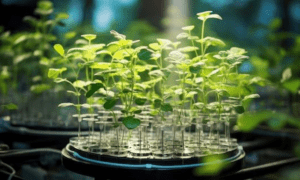The quest for sustainable energy solutions has spurred a technological leap, bringing innovative advancements to the forefront of the energy industry. As we navigate towards a greener and more sustainable future, various technologies are playing a pivotal role in reshaping the landscape of energy production.
Revolutionizing Renewable Sources
1. Advanced Solar Technologies: Traditional solar panels have paved the way for more advanced technologies, such as thin-film solar cells and solar paint. These innovations aim to enhance efficiency, reduce costs, and broaden the possibilities for integrating solar energy into various surfaces.
2. Next-Gen Wind Turbines: Wind energy continues to evolve with next-generation wind turbines featuring improved efficiency, design, and energy output. Vertical-axis wind turbines and offshore installations represent cutting-edge advancements in harnessing the power of the wind.
3. Innovative Hydropower Systems: Hydropower, a longstanding source of renewable energy, is witnessing innovation with the development of fish-friendly turbines and underwater turbines that tap into marine currents. These advancements address environmental concerns and expand the potential for hydropower.
AI algorithms are employed for predictive analytics, forecasting energy demand, optimizing power distribution, and identifying potential equipment failures. This proactive approach enhances overall system reliability.
CASEY CEO AT GJEL ACCIDENT ATTORNEYS
Energy Storage Breakthroughs
1. High-Capacity Batteries: The rise of electric vehicles has driven advancements in high-capacity batteries. These batteries not only revolutionize the automotive industry but also play a crucial role in storing excess energy generated by renewable sources for later use.
2. Hydrogen Energy Storage: Hydrogen is emerging as a promising energy carrier for storing excess renewable energy. Fuel cells and hydrogen-based storage solutions provide an alternative for long-term energy storage and transportation.
Smart Grids and Energy Management
1. Smart Grid Integration: Smart grids leverage advanced technologies, including the Internet of Things (IoT) and artificial intelligence, to optimize energy distribution. These grids enhance efficiency, enable real-time monitoring, and support the integration of diverse energy sources.
2. Demand Response Systems: Intelligent demand response systems empower consumers to actively manage their energy consumption. By leveraging data and automation, these systems contribute to a more balanced and responsive energy grid.
Artificial Intelligence (AI) in Energy
1. Predictive Analytics: AI algorithms are employed for predictive analytics, forecasting energy demand, optimizing power distribution, and identifying potential equipment failures. This proactive approach enhances overall system reliability.
2. Energy Management Systems: AI-driven energy management systems analyze consumption patterns, providing actionable insights for optimizing energy usage in both residential and industrial settings. These systems contribute to energy efficiency and cost savings.
Conclusion: Paving the Way for a Sustainable Future
The technological leap in sustainable energy production represents a transformative journey towards a cleaner, more efficient and resilient energy landscape. From harnessing renewable sources with advanced technologies to developing cutting-edge energy storage solutions and implementing intelligent grids, innovation is shaping the future of energy.
As these technologies mature and become more widely adopted, they will contribute significantly to achieving global sustainability goals. The synergy of technological advancements, coupled with a collective commitment to sustainable practices, holds the promise of a greener and more sustainable future for generations to come.































